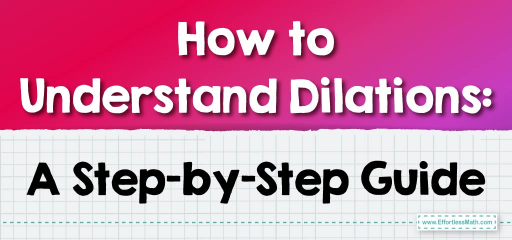How to Understand Dilations: A Step-by-Step Guide

Examples
Practice Questions:
- Dilate the point \(C(3, 2)\) about the origin using a scale factor of \(3\).
- Dilate the point \(D(6, 7)\) about the origin using a scale factor of \(0.25\).
- \(C'(9, 6)\)
- \(D'(1.5, 1.75)\)
Related to This Article
More math articles
- Best Free Apps That Solve Math Problems for You
- How to Find Percent of Increase and Decrease? (+FREE Worksheet!)
- Sentence Solvers: How to Completing Addition and Subtraction Equations
- 4th Grade SOL Math Worksheets: FREE & Printable
- How to Graph Absolute Value Inequalities?
- Average Value of a Curve
- How to Identify the Function from the Graph
- How to Add and Subtract in Scientific Notations? (+FREE Worksheet!)
- How to Find Fractions of Time Units
- Top 10 Algebra 1 Books in 2026 (Expert Recommendations)


























What people say about "How to Understand Dilations: A Step-by-Step Guide - Effortless Math: We Help Students Learn to LOVE Mathematics"?
No one replied yet.